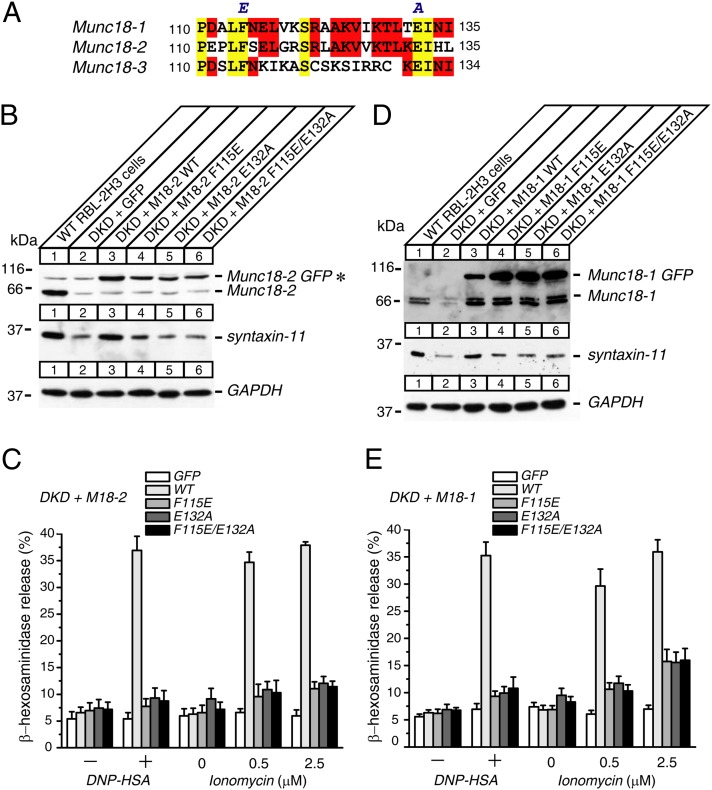Fig. 4.
Hydrophobic pocket mutants of either Munc18-1 or Munc18-2 do not restore the syntaxin-11 expressions or the degranulation defects of Munc18-1/2 DKD RBL-2H3 cells. (A) Sequence alignment among Munc18-1, Munc18-2, and Munc18-3, indicating that F115 and E132 are conserved residues in Munc18 isoforms. (B and D) Munc18-1/2 DKD RBL-2H3 cells were infected with lentiviruses that express EmGFP, wild-type Munc18-EmGFP, and hydrophobic pocket mutant Munc18-EmGFP (F115E, E132A, and F115E/E132A) (B) Munc18-2 and (D) Munc18-1. Infected cells were selected with blasticidin (20 μg/mL). Twenty micrograms of homogenates of surviving cells were analyzed by SDS/PAGE and immunoblotting, using the antibodies indicated. *Nonspecific band observed with rabbit polyclonal anti-Munc18-2 antibody that comigrated with Munc18-2-EmGFP. (C and E) β-hexosaminidase release was stimulated by applying 0.01 μg/mL DNP-IgE and 50 ng/mL DNP-HSA, as well as 0.5 μM and 2.5 μM ionomycin for 1 h from rescued cells (C) Munc18-2 and (E) Munc18-1. Error bars, SEM (n = 5 for C, n = 6 for E).

